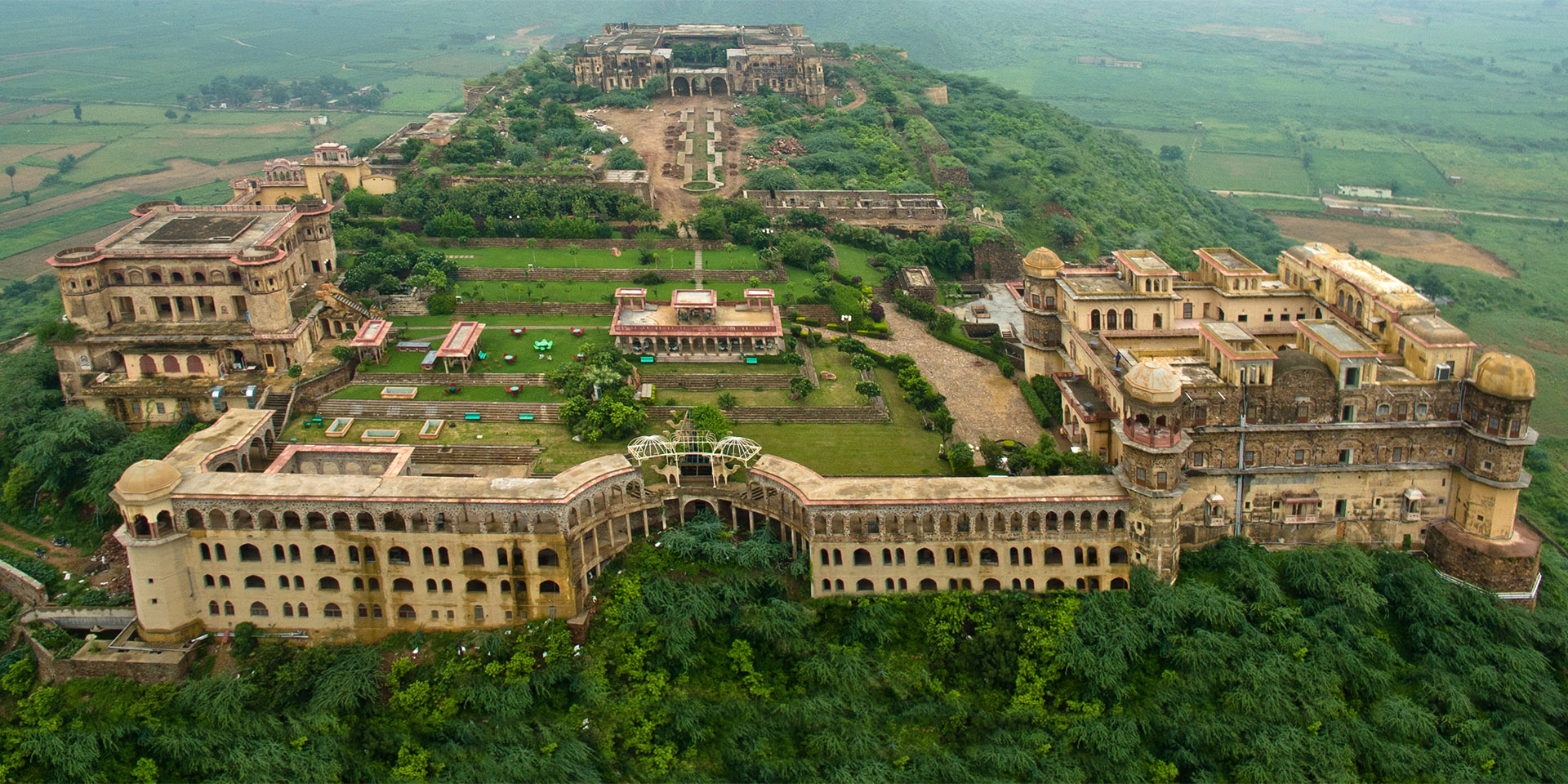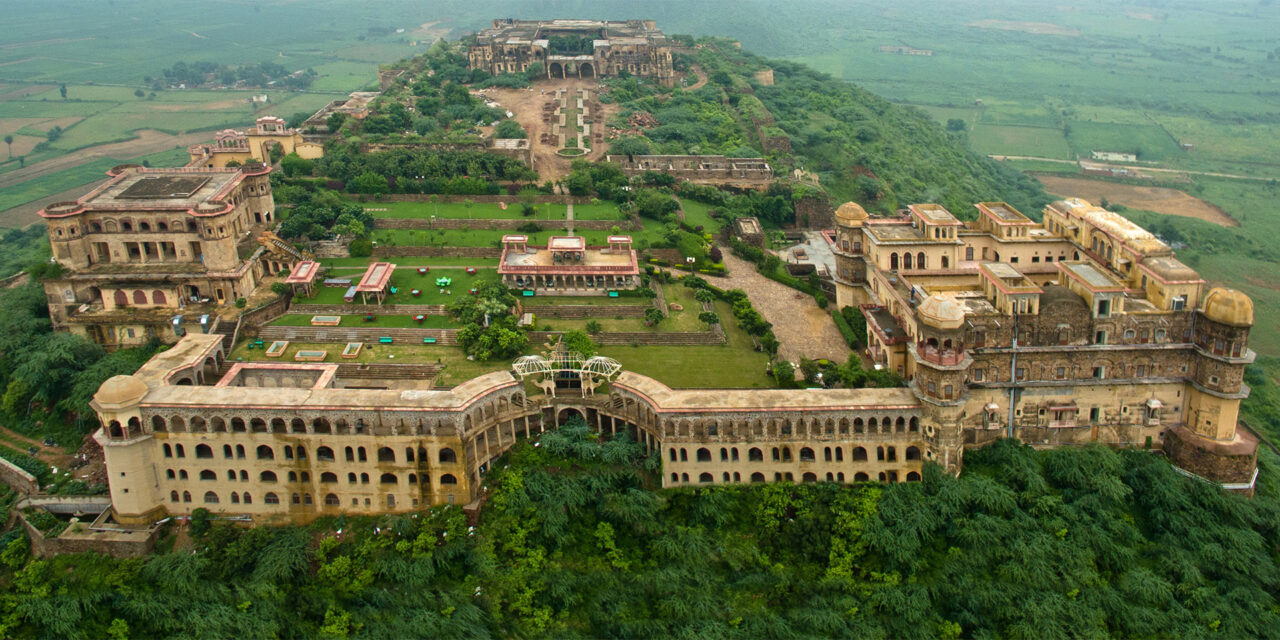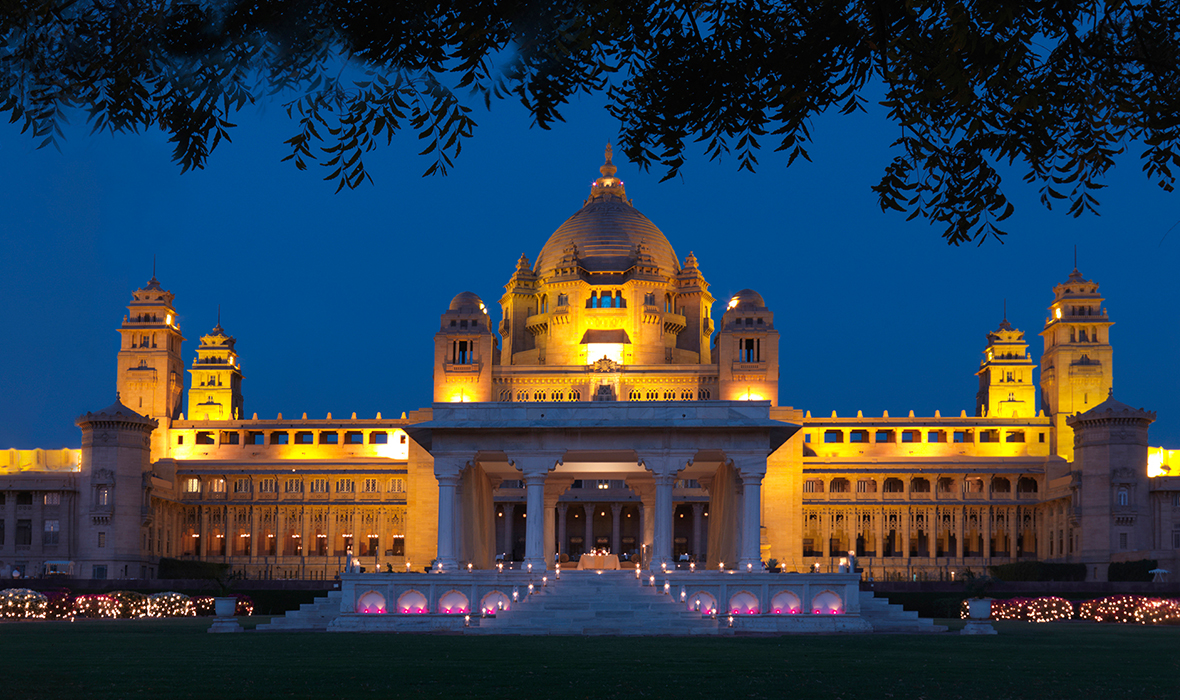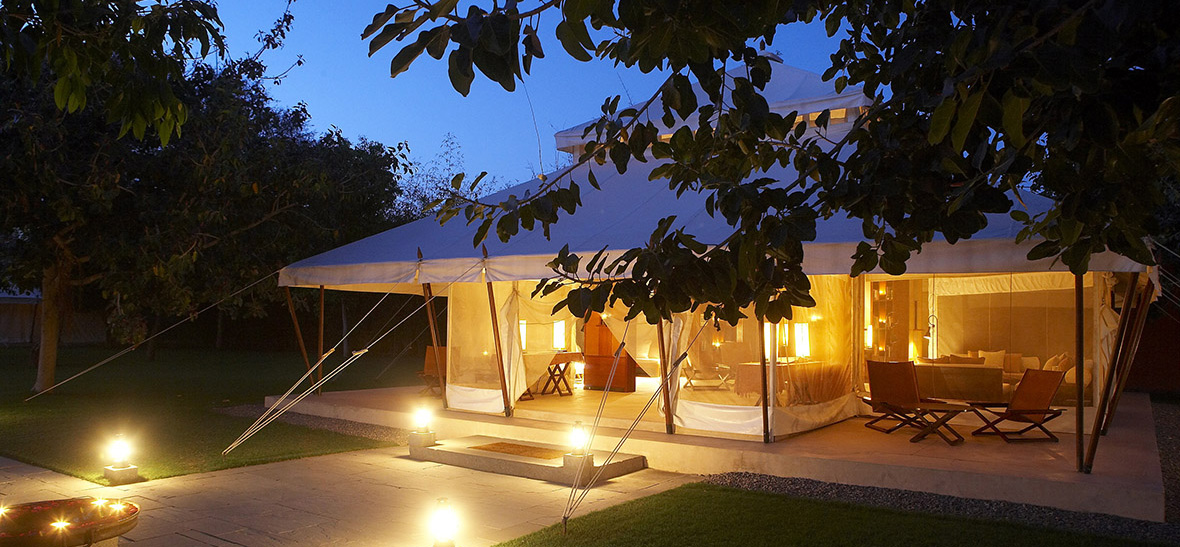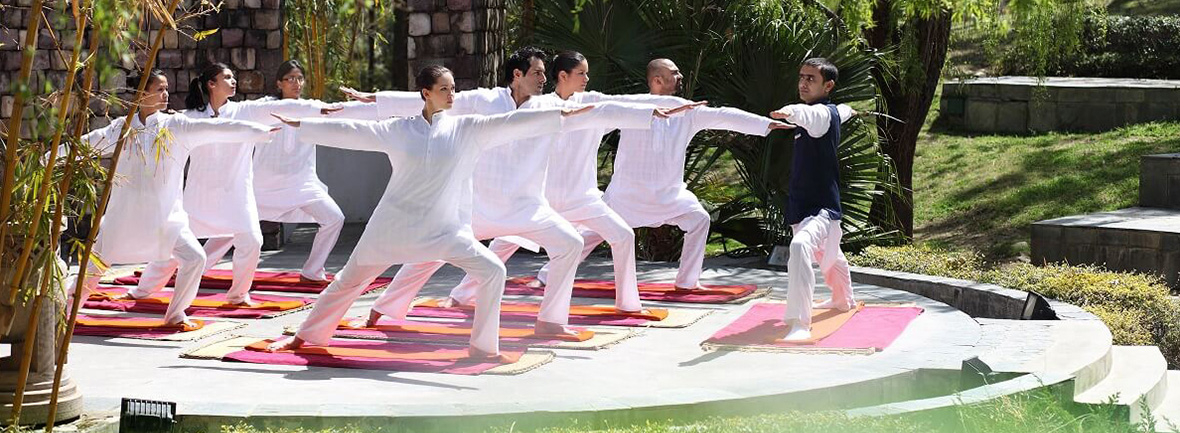The Tijara Fort Palace is uneven, broken, and yet still somehow evokes a sense of reverence that only a royal residence can. Our car serpents though vacant plots toward the palace on the hill.
These 19th-century ruins remained in disrepair for over a hundred years, today a nearby high-end weekend getaway from the torrent of New Delhi. The conversion of Tijara Fort from a deserted palace into a luxury destination has been nothing short of spectacular.

Conceptualized by the King of Alwar, Bakhtawar Singh, the construction of the fort began with his son Maharaja Balwant Singh in 1835.
Alwar, after the demise of Maharaja Bakhtawar Singh, was divided into two parts with two thirds going to Viney Singh and one third, specifically the region around Tijara, to the flamboyant Balwant Singh, son of Moosi Rani. A favorite mistress of the king, Moosi Rani committed ritual sati after his death and so earned the honors of queen.
It was in her name that Maharaja Balwant Singh began work on Tijara Fort Palace which would ultimately be the residence of the royal family. With no heir and his untimely death in 1845, the fort was left unfinished.
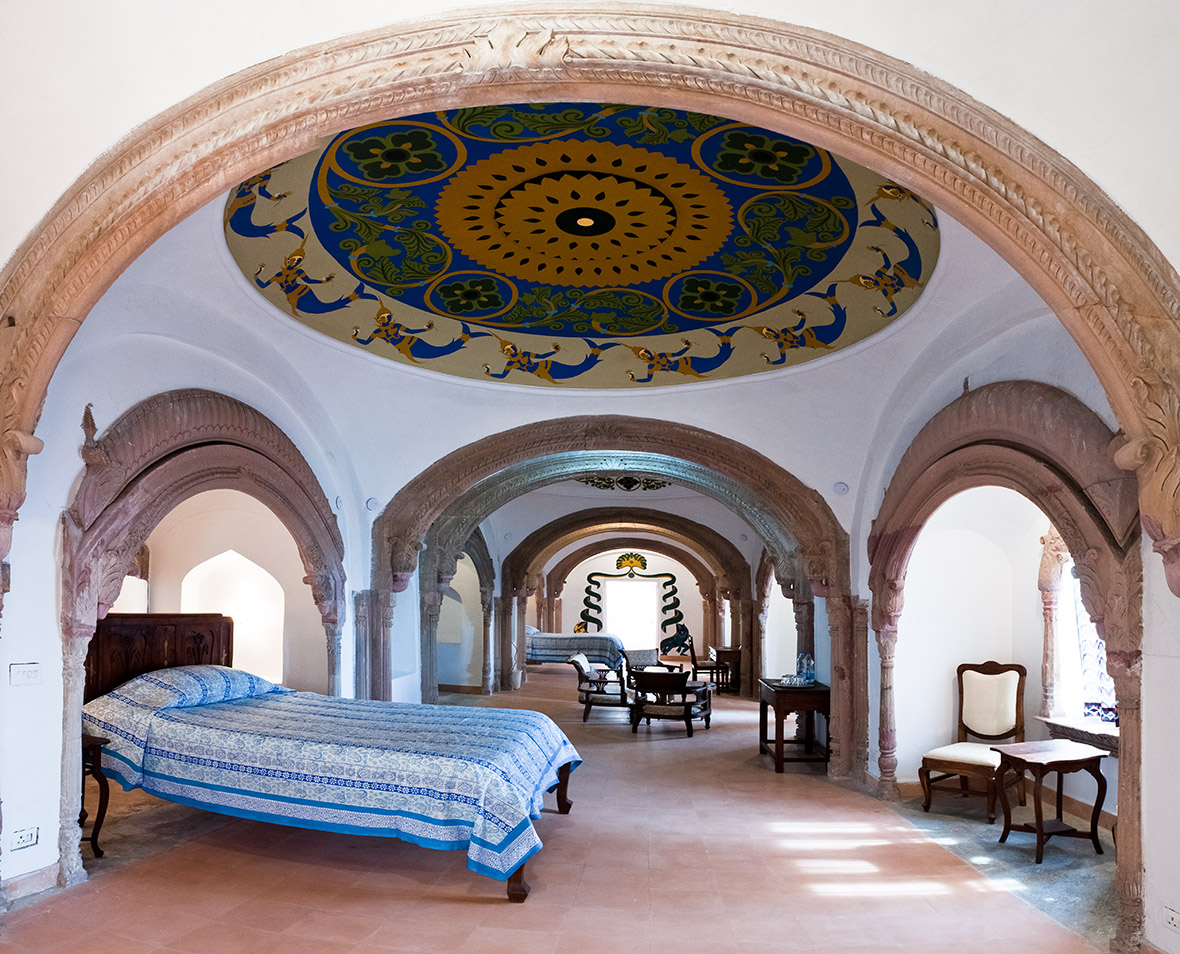
ABOVE: Mukesh Mahal in the Mardana.
The abrupt stoppage of work at Tijara Fort Palace left stones remaining all over the property grounds. Over the years, as foliage took over and it became more difficult to reach, the once royal palace became a notorious hiding place for criminals. There would be the occasional adventurous soul who would climb up for the panoramic views, but it was certainly no place for a family day out.
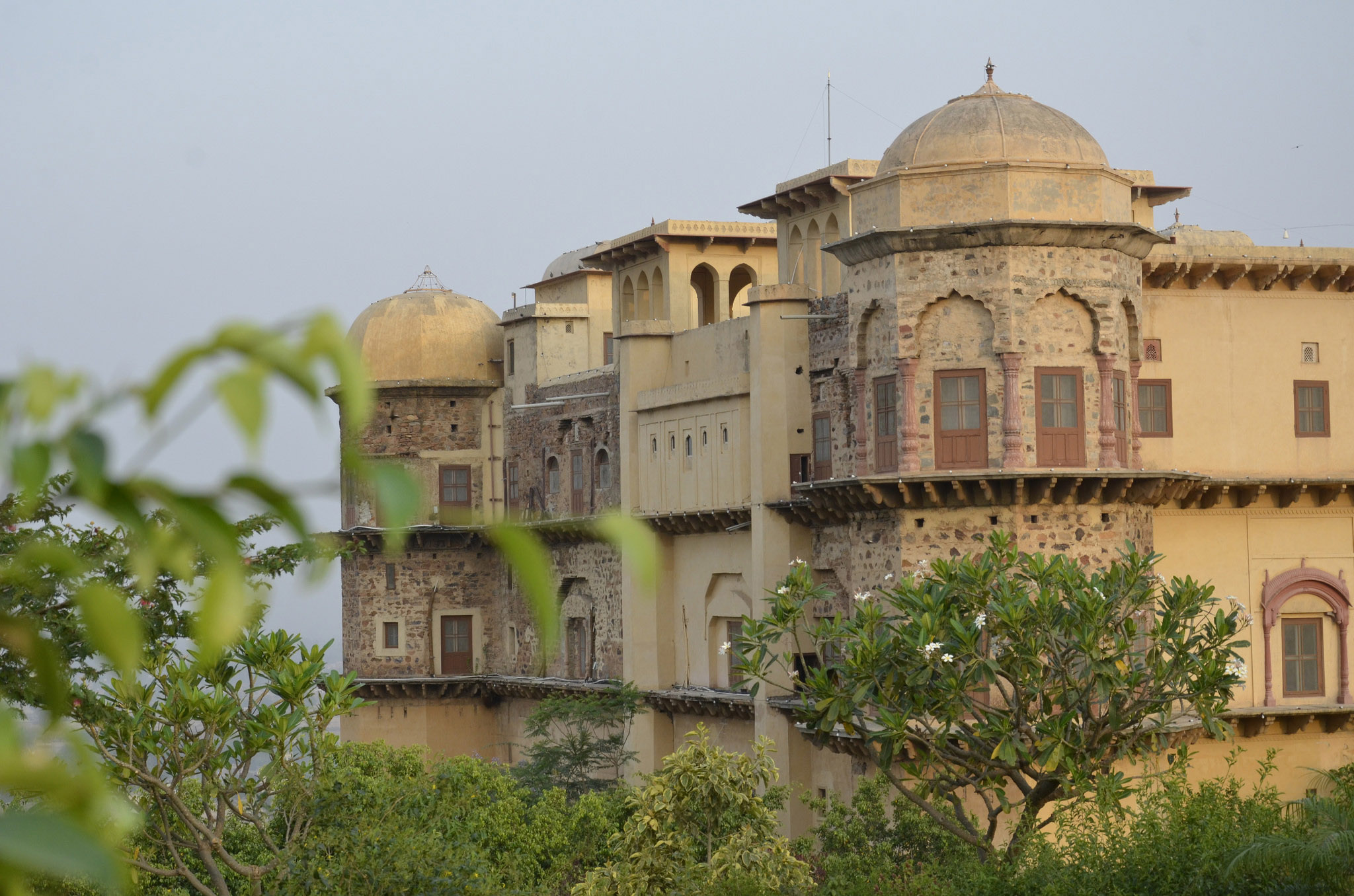
ABOVE: Tijara Fort Palace exterior.
The unfinished fort where no royal ever lived got a fresh beginning when a decade ago the Neemrana group of hotels took over the ruins on a lease from the government. It took ten years before the site was made habitable, opening its doors to guests in January of 2016.
Maharaja Balwant Singh originally used architects from Kabul and Delhi, which gave the architecture of the palace a distinct Afghan-Indo style with hints of colonialism. Stonework with ornate designs, open areas designated for gardens, arches, and large living spaces form the basis of the fort. The Maharaja was particularly fond of elephants, thus the elephant motif on stones throughout.
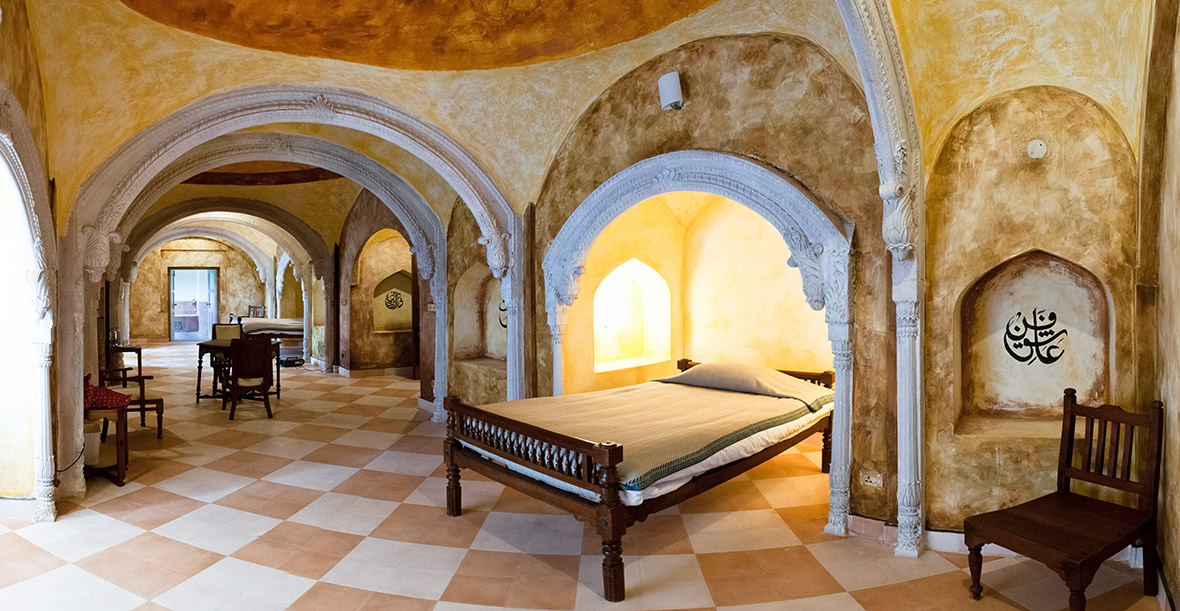
ABOVE: Kotwara Mahal in the Mardana.
Tijara Fort Palace is divided into three main parts; the Mardana Mahal was where the king would have conducted his day to day operations. It has an open approach and is situated away from the rest of the buildings.
The Rani Mahal would have been the private residence with its more enclosed and protected features with the Hawa Mahal, or the Palace of Winds, being for cultural activities.
A fourth area, called Deewar Mahal, which consisted only of a strong wall was recently completed with five new rooms opening soon, adding to the 60 residences available
To better understand and appreciate the architecture of Tijara Fort, it’s worth taking a trip to Moosi Rani ki Chattari, a one-hour drive into Alwar, which was built in remembrance of the queen. The Palace of Alwar, converted into a courthouse along with the lake and the Chattari itself, is a reminder of the architectural styles of the age.
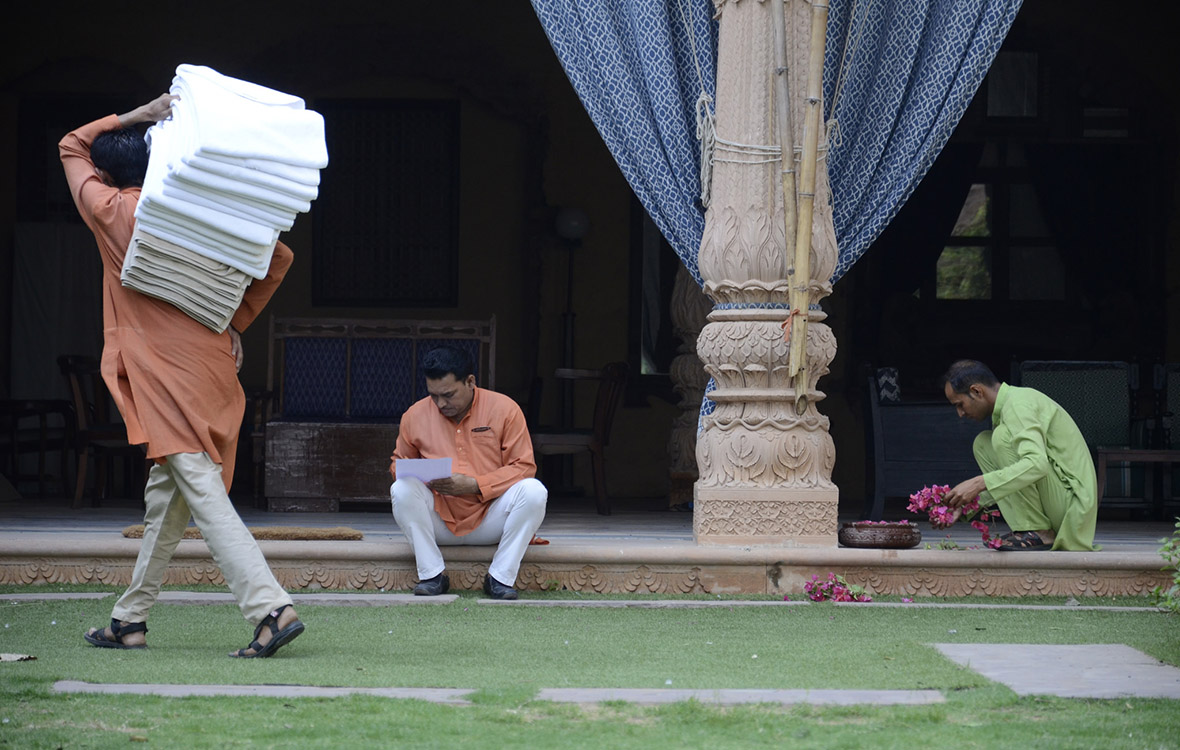
ABOVE: Attentive staff at the Tijara Fort Palace.
Speaking with Mr Satbeer, a local resident of Tijara and someone who has long been with the Neemrana group, one specialty of Tijara Fort Palace is the exquisite craftsmanship. He also spoke passionately about the surrounding areas and how the views take on new colors with the changing seasons. The fields around the palace are either forest or used for growing sunflowers, bajra, peanuts, and jowar.
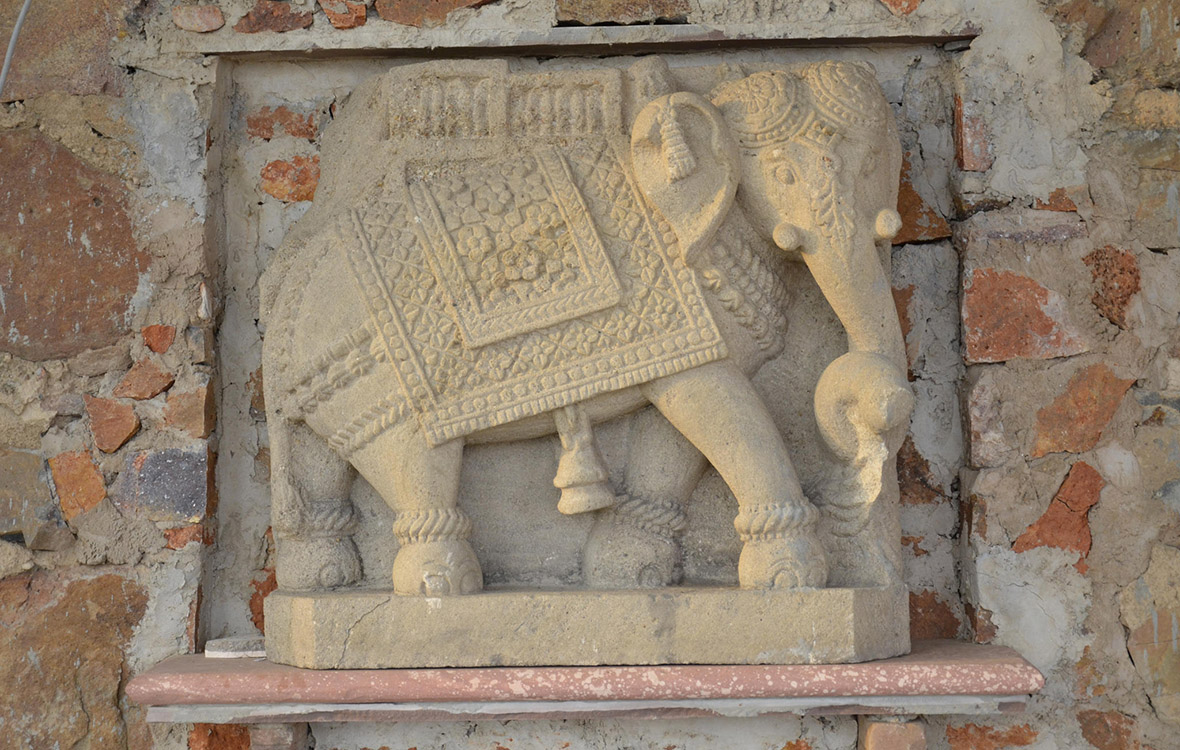
Time permitting, it’s worth exploring some of the other marvels that are found in this part of Rajasthan. The Surajmukhi Dam and natural spring, the famous Jain Temple of Tijara, or as we did, you can take a day trip to the iconic Chand Bowri (stepwell) in Abhaneri. If you are courageous enough for some ghoul hunting, then spend some time at the Bhangarh Fort, a two-hour drive away, which is considered one of the most haunted places in India.
Neemrana has taken boldly, and in part completed, the mammoth task of reviving the splendor of Tijara Fort Palace. The transformation is ongoing and it’s astonishing to watch the changes in photographs of the original site.
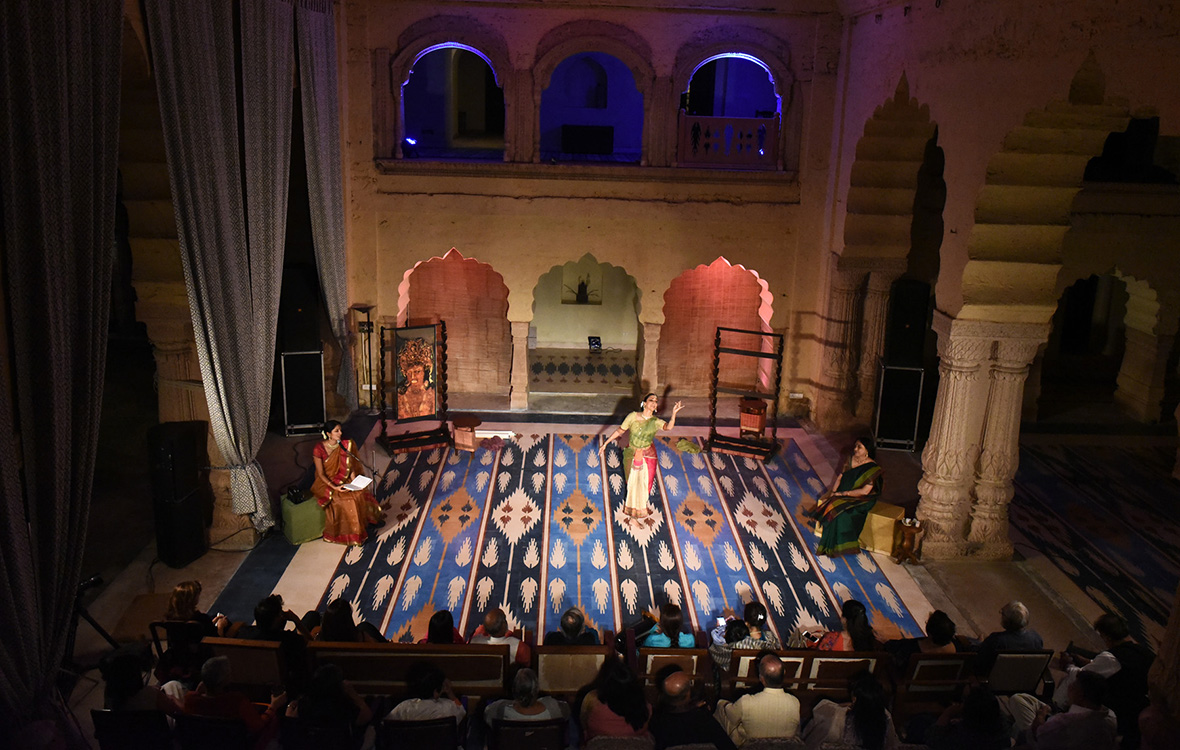
ABOVE: Musical performance at Tijara Fort Palace.
Tijara Fort Palace, which also happens to be a location often taken over for film shoots or destination weddings, has outstanding service. The staff is the backbone of this venture and their friendliness and willingness to serve is exceptional.
The food consists of humble yet specialized buffets, catering to both vegetarian and non-vegetarian guests. While there are a limited number of dishes, the flavors are truly extraordinary, altered to suit all tastes.
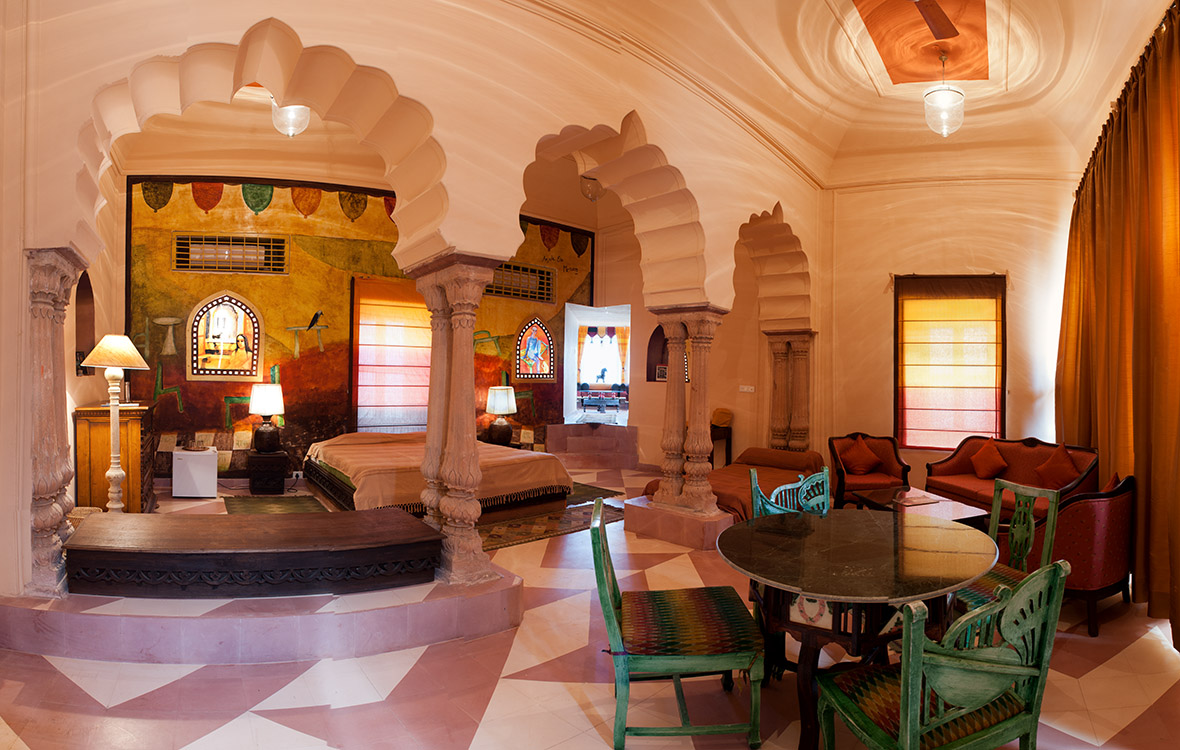
ABOVE: Anjolie Mahal room.
There is still a lot to be done at Tijara Fort including a possible water feature that leads from Mardana Mahal all the way down to adding more rooms and maybe a couple of places to eat – as just the one restaurant, Kanch Mahal, serves everyone at the moment.
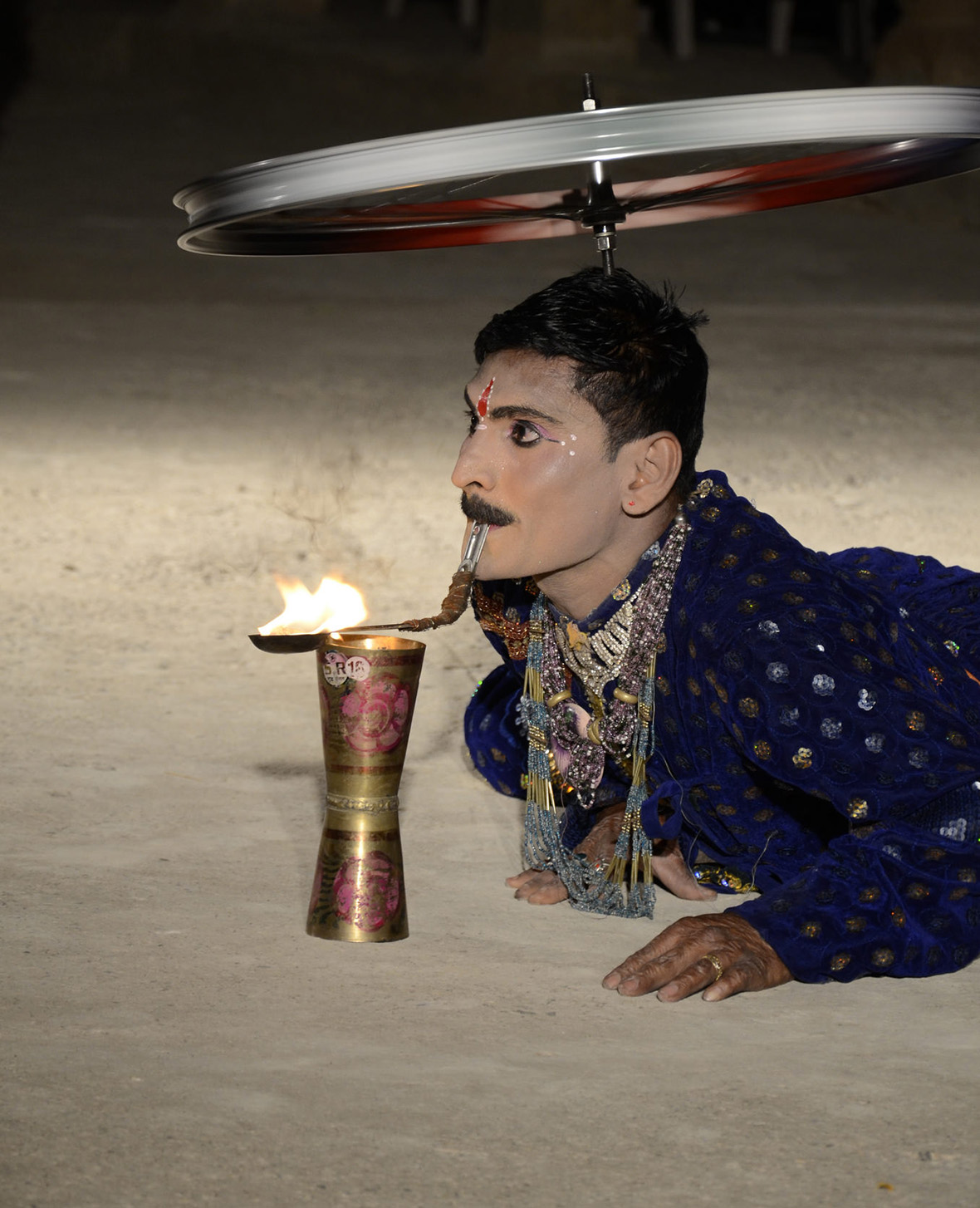
ABOVE: Fire performance at Tijara Fort Palace.
The “hanging gardens” add a carpet of green to the fort which juxtaposes beautifully with the subtle colors of the ancient buildings. Then there’s the pool, Pataal Kund, and the spa which is nothing short of a royal bath. The auditorium, which has the backdrop of photogenic arches, is where nightly events take place. As the sky turned dark, Rajasthani performers gave us a stunning dance, music, and death-defying juggling performances that kept the enthusiastic audience entranced for over an hour.

The highlight of any stay at Tijara Fort Palace is the rooms, all of which have been named and decorated by noted artists from the country. The Rani Mahal gives importance to the female artists whereas the Mardana Mahal has male painters giving their unique touch to the rooms.
This exclusive setup that celebrated India gives every room a personality and inimitable characteristic. With four-poster beds, writing desks, rocking chairs, and modern comforts, there is one amenity that is notably (and, for some, thankfully) absent from these exceptional rooms – but the lack of a TV adds to the charm.
Tijara Fort Palace captures the fantasies of its guests by amalgamating the marvels of an exceptional location, admirable service, a homage to the artists of the nation. Most importantly, Tijara highlights a legacy.

